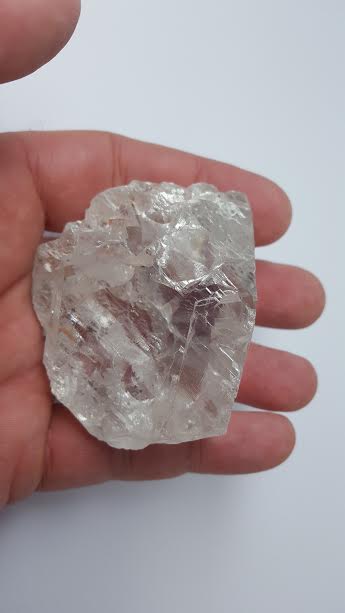
A version of this site visit report was sent to paid Resource Opportunities subscribers on May 11.
May 25, 2017
By James Kwantes
Editor, Resource Opportunities
Their unique combination of portability and value make diamonds a favoured target of thieves, both on the big screen and in real life.
In The Pink Panther, a distinctive pink diamond was fodder for several movies worth of escapades between bumbling Inspector Clouseau and the elusive jewel thief.
Away from the screen, one of the biggest thefts was the Antwerp diamond heist of 2003. Thieves planned it for years, including posing as diamond merchants and renting office space in the Antwerp Diamond Center. They then made off with more than US$100 million in diamonds and jewelry from a heavily fortified safe. The bad guys were arrested; the gems were never found.
However, the greatest diamond heist of all time didn’t involve masked men, gunpoint or intricate plans concocted over several years. In fact, it didn’t involve coercion at all.
It went down rather quietly in the fall of 2009 when upstart Lucara Diamond Corp. bought a controlling interest in AK06, a De Beers diamond project in Botswana, for US$49 million. De Beers’ discovery of the nearby AK1 kimberlite — now Orapa, the world’s largest diamond mine — had launched a diamond district in Botswana’s Kalahari desert. But the diamond giant was now shedding assets and William Lamb, then Lucara’s only employee and now its CEO, was looking.
—
Subscribe to Resource Opportunities this month and use coupon code JUNE to receive $100 off regular subscription prices of $299 for 1 year and $449 for 2 years. That’s considerably less than the profit on one successful trade, making Resource Opportunities one of the best value propositions in the newsletter world. Our focus is actionable investment ideas with high speculative upside potential and compelling narratives on the sector’s strongest companies. Recent examples: $ERD.T at 37.5c & $SBB.T at 39c. Join us today and profit!
—
Lamb had been hired the previous year by Lukas Lundin, the Swedish tycoon whose international mining empire is based in Vancouver. The idea of a diamond company called Lucara was hatched earlier during a Lundin lunch with Catherine McLeod-Seltzer and Eira Thomas (who contributed the “ca” and “ra,” respectively, for the company name). Lamb spent more than a year scouring the globe for prospective diamond projects and plotted them on a spreadsheet, he told me during an interview in Botswana. AK06 made his short list.
He ironed out the purchase price for a 70% stake in AK06 during a 5-minute phone conversation with an executive at De Beers, where Lamb had worked for several years. Lucara later bought out JV partner African Diamonds — who couldn’t afford to fund their share of mine construction costs — to take control of 100% of the project. AK06, of course, became the Karowe mine, the source of many of the world’s largest and most valuable rough diamonds. Lucara has now sold 145 diamonds for more than US$1 million each, generating US$528 million.
Lucara sells its largest stones through Exceptional Stone Tenders, where buyers submit sealed bids over a number of days. On May 11 Lucara announced sales proceeds of US$54.8 million from its latest tender, the largest yet. The sale featured 15 diamonds for a total of 1,765 carats, including a 374-carat Type IIA diamond, below, that fetched US$17.54 million. The 374-carat stone broke off the 1,109-carat Lesedi La Rona, the world’s most famous diamond. It was purchased by Graff Diamonds, whose owner Laurence Graff is arguably the most powerful player in the global diamond trade. I suspect he desires the larger companion piece.
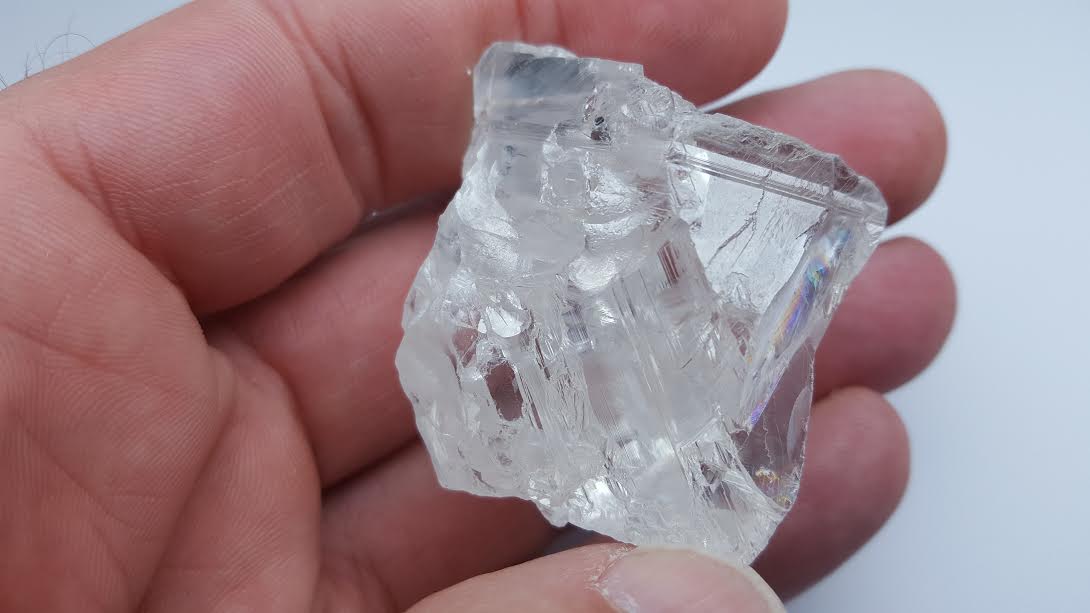
The “Lesedi La Rona” — “Our Light” in the local Tswana tongue — was unearthed in November 2015. It is the largest gem-quality diamond recovered in a century and the second largest ever. The stone was named last year in a contest open only to Botswana residents. Last year Lucara put the Lesedi up for live auction at Sotheby’s in London. But the diamond failed to sell because bids didn’t hit the reserve price. More on that later.
Lucara sold the 813-carat Constellation diamond, recovered at about the same time, for US$63 million — a record for a rough diamond — as well as a share of the profit generated from the cut stone. Notably, the price tag for the Constellation exceeded what Lucara had paid just seven years earlier for a controlling interest in the mine that produced it.
I travelled to Botswana recently to visit Lucara’s operations and learn more about both where the company has been and where it’s going. Also on the tour was the Africa correspondent for a Swedish daily newspaper and an analyst for Nordea, a large Swedish bank. There are plenty of reasons to be bullish Lucara and I have purchased more shares in the company since I returned.
“Big” and “beautiful” were recurring themes of the trip. After the site visit, I went on a two-day safari at a lodge on the Boteti — the only river that runs through the Kalahari Desert. Watching elephants, hippos, lions, giraffes and zebras in their natural habitat was an amazing experience. Fun fact: a group of zebras is called a “dazzle.”
BOTSWANA, DIAMOND POWERHOUSE
I flew into Gaborone, Botswana’s capital, through Frankfurt and Johannesburg. “Gabs,” as the city is known colloquially, has become a global diamond centre as Botswana has risen among the ranks of producers. The African nation is now the second largest producing nation by value, unearthing 22% of global supply, as outlined by New York-based diamond analyst Paul Zimnisky (Russia is first, Canada third). Most of the Botswana stones come from the Jwaneng and Orapa mines, located in the same neighbourhood as Karowe.
In 2013, De Beers moved its sorting and sales operations to Gaborone, an exclamation mark on Botswana’s emergence as a diamond power. Botswana owns the other 15% of De Beers not owned by Anglo American, as well as 50% of Debswana, a De Beers JV. Diamonds generate up to 50% of government revenues, funding universal health care and education (including post-secondary). Botswana is one of Africa’s fastest-growing economies and has a higher GDP per capita than South Africa.
One of the first stops for our small group was the gated Diamond Technology Park (DTP) on the outskirts of Gaborone. The compound is the headquarters for Lucara and other Botswana diamond miners. Down the street is the De Beers sorting centre. A helipad atop that building attests to former De Beers boss Nicky Oppenheimer’s fondness for helicopter transportation.
The DTP is ground zero for the billionaires, royalty and other high-net-worth investors who fly in from around the world to view Lucara’s finest merchandise: large rough stones that sell for millions — sometimes tens of millions — of dollars. The company picks up clients at the airport and whisks them in limousines to Lucara showrooms. Some spend hours with a single stone — investigating the clarity, evaluating the colour, envisioning the cut possibilities. The 1,109-carat Lesedi La Rona was not part of the latest Exceptional Stone Tender. But presumably some of the clients who flew in to view the diamonds on offer also viewed the Lesedi.
Security measures were extensive. My fingers were printed and retinas scanned. Later, on the way in to Lucara showrooms, I was searched in a secure room. On the way out, I was asked to remove a candy from my mouth to show that it wasn’t something much more valuable.
Steve Lincoln, Lucara’s sales manager, is a former De Beers man — like many in the sector. He led us into a room that shimmered with diamonds grouped by weight, colour and quality. Here, a group of 5- to 10-carat stones. There, a selection of the diamonds being sold in the Exceptional Stone Tender. Most were white and clear. Among them was the beautiful 374-carat Type IIA stone that went for almost US$18 million.
LESEDI LA RONA
Our final stop was at the icy elephant in the room. Sitting by itself on a white table under a row of lamps was the Lesedi. I picked up the rock, muscles adjusting to its heft as I cradled it in my fingers. Looking into the diamond through a loupe, what struck me was the stone’s architecture. Beyond the clear, smooth plane where the 374-carat diamond cleaved off were ridges, soft pools of light, jagged edges, rippled valleys. Close up, it’s easy to get lost in the stone’s landscape. The diamond occupies its own world.
And in the diamond world, news of its arrival landed like a lightning bolt. Once cut and polished, the Lesedi could be among the world’s largest clear diamonds. The largest, the 530-carat Great Star of Africa (or Cullinan), was cut from the 3,106-carat Cullinan diamond — the only larger diamond ever found. The Great Star is set into the British Crown Jewels. But not only did the Lesedi break, it broke the mould. The diamond’s size makes it difficult to determine how many stones could be cut from it, or how they might look. The rock doesn’t fit into the largest scanners made for diamonds.
The diamond’s incredible narrative was derailed by the unsuccessful auction. Following a global road show and marketing campaign, the Lesedi La Rona failed to hit the (undisclosed) reserve price at a glitzy live auction in London on the evening of June 29, 2016. The top bid was US$61 million, less than the Constellation had fetched and far below projections of a potential US$100-million sale price. The Constellation’s per-carat price, US$77,500, implied an US$86-million value for the Lesedi — plus a large premium given the stone’s provenance.
The fate of Lesedi La Rona remains the million-dollar question — perhaps, the $100-million question. Interest remains high — Lamb fields calls about the diamond most days (two on the day of the interview). Cash offers are rejected out of hand. A few members of the cast of characters drawn out by the giant diamond have been particularly interesting, Lamb said with a smile. He didn’t elaborate.
As author Matthew Hart documented in an Aug. 5, 2016 feature in Vanity Fair, it wasn’t for lack of interest that the auction fizzled. Moments after the hammer fell, Laurence Graff’s son rushed up to the CEO to express interest in the stone.
DIAMANTAIRES AND DISRUPTION
In the diamond business, diamantaires are the middlemen. They privately purchase rough stones from producers, cut them and take their cut of the value created. It’s a traditional, secretive system that goes back centuries. Lucara was the upstart that shook the foundations of that established order by auctioning the world’s most desirable stones.
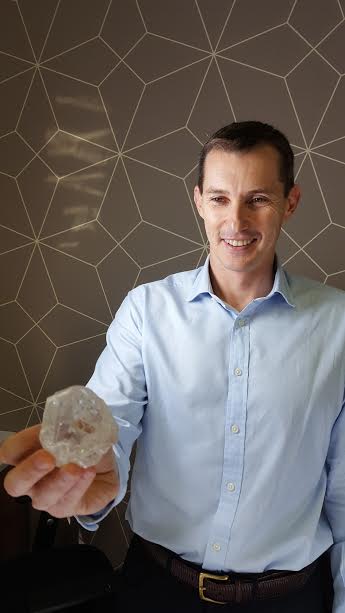 “Diamantaires felt that we were trying to sell the stone to their end client,” CEO Lamb, right, states matter-of-factly. “The diamantaires hate the public process. … they will pay you more for that exclusivity.”
“Diamantaires felt that we were trying to sell the stone to their end client,” CEO Lamb, right, states matter-of-factly. “The diamantaires hate the public process. … they will pay you more for that exclusivity.”
It goes some way to explaining why the second largest gem-quality diamond ever recovered, a stone with historical significance, failed to sell at the live auction.
Lamb reasons that Lucara is actually helping other producers — especially the handful of other producers that recover very large diamonds — by controlling the supply of such stones through orderly tenders. The company could easily swamp the market for large diamonds, he points out.
As for the auction, the company did not get to the pinnacle of the large-diamond world by shying away from calculated risks, the CEO noted. The live Sotheby’s auction, he acknowledges, was an experiment. The exercise, driven by the significance of Lucara’s find as Lamb tells it, didn’t ultimately pay off — at least monetarily.
“We wanted to maximize shareholder value and let the world know that we had recovered the only 1,000-carat stone that anybody on the planet had ever seen.” (The Cullinan was unearthed in 1905.)
Lamb continues: “It’s not because we just love the risk and we sort of don’t pack our parachute and jump out of the plane. We’re packing the parachute very meticulously. We’re going to the edge of the cliff and we’re jumping, knowing that we’ve actually done our homework.”
As “failures” go, the Lesedi La Rona marketing blitz and auction was rather successful. The company estimates about 1.8 billion people — a quarter of the world’s population — have either seen, read about or heard about the diamond. But only about 100 people have held the stone, and the list of potential buyers is shorter yet. The diamond’s fate has weighed on company shares, which have drifted down from the $4 level pre-sale to below $3.00.
Eighteen months after its discovery, Lamb still becomes animated when talking about the Lesedi. The diamond, forged deep within the Earth over billions of years, is likely as old as the Earth itself, the CEO enthuses. “That stone was growing as the Earth cooled down … the Earth was just gas clouds collecting. While that gas cloud is collecting, those carbon atoms were already trying to find each other. The stone was starting to grow that far back.”
Tall and trim, Lamb is a former elite athlete who has represented South Africa at the world track and field championships (he once placed fifth in the duathlon). Running remains a passion — a recent excursion with a friend and his son saw Lamb start at one edge of the Grand Canyon, run down and through it, and up the other side (it took him 4.5 hours). I got the sense that blazing a trail through the traditional diamond industry — not to mention proving naysayers and skeptics wrong — brings out his competitive juices.
That said, other extraordinarily large diamonds the company finds will likely not be sold at live auction. “We learn from our mistakes. We wouldn’t go back to auction.” Lucara is investigating various options for selling the Lesedi, Lamb said, including partnership and/or retaining a financial interest in the polished product.
A humorous moment in the showroom, which had an empty diamond scale sitting on the table when we walked in. When the Lesedi La Rona was placed on the platform, the reading that came up was 1,106 carats — prompting a few laughs as well as nervous glances between company officials. As it turned out, the scale had not been calibrated after it had been moved into the room. The stone does, in fact, weigh 1,109 carats.
TWO SUITCASES, $1 BILLION IN STONES
After viewing some of the most valuable stones pulled out of Karowe, we flew to the mine for a tour of the operation. It started in the open pit, which measures 820 metres across at its widest point and is about 80 or 90 metres deep. Weekly dynamite blasts loosen up the ore, which is transported out by 100-tonne dump trucks. The strip ratio is in the range of 5 or 6:1 for the next couple of years, then drops to below 2 due to the shape of the kimberlite. Lucara will then shift focus from accessing the treasure to mining it. The bottom of the pit will get about three times as deep by the end of the current mine life, in 2026.
Lucara recently brought in a new mining contractor at Karowe, a move prompted by consistent over-billing by the previous contractor for volume of ore processed, Lamb said. Open-pit mining was shut down for two months during the transition but operations were not affected — Lucara mined from stockpiles. It has worked out alright, Lamb says — the new contractor is cheaper and has more capacity.
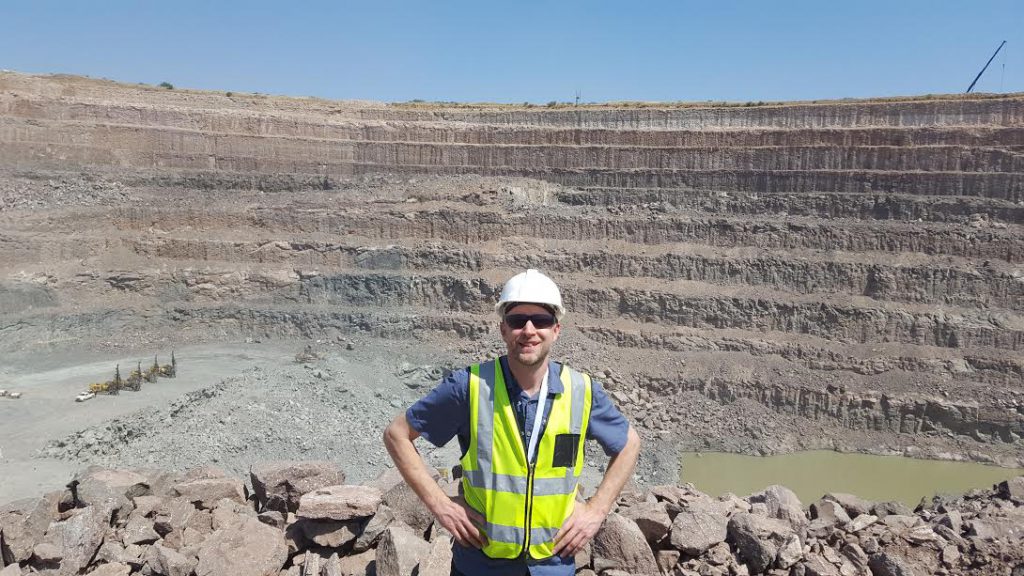
About 40 million cubic metres of rock have been processed since Karowe opened. The diamonds recovered could fit in two suitcases. They have generated a billion dollars in revenue, and counting.
Lucara is working on economic studies — due out later this year — on an underground expansion that would extend the Karowe mine life well beyond 2026. And it’s the expansion that could really drive profitability if Lucara can continue to pull large stones out of the south lobe. That’s the largest kimberlite, from which the Lesedi and Constellation were unearthed. Lucara completed a deep drilling program at Karowe in February that included a 758-metre drill hole. An updated resource estimate is expected in Q4.
Lucara is also building a Mega Diamond Recovery unit (MDR) at Karowe. A particular challenge of diamond mining, especially for Lucara, is avoiding breakage during a process that consists of crushing and grinding rock into progressively smaller pieces. The MDR, at a cost of between $15 million and $18 million, will divert the largest stones at the front end of the mining process. The unit will be able to recover stones as large as 45-50mm. Lamb refers to the recovery of large stones as “mining money” and the MDR will help Lucara recover the largest, most valuable stones intact. The company is also installing four new XRT (X-ray transmission) diamond recovery units.
Viewed from the primary crusher — the first point of entry for the ore and one of the highest points of the mine — the operation resembles a kind of amusement park. The ball mill is the Ferris wheel, the conveyors the roller-coasters that deposit sometimes precious cargo at the next stop. In this Darwinian adventure park, only the most valuable cargo survives a series of crushing and shaking exercises.
Karowe has a been a phenomenal success, by many metrics. The mine was built in just 18 months and had a 9-month payback. In December 2016, just four years and eight months after the very first diamonds were produced, Lucara passed $1 billion in sales. The company implemented a dividend in 2014 and has now paid out more dividend dollars than it has raised in equity. The dividend policy also broke new ground as the first company in the Lundin empire to pay one. It took six months to convince Lundin, Lucara’s chairman, to go with a dividend, Lamb recalls with a smile.
Karowe mine staff also reaped the benefits of the recovery of the 813-carat and 1,109-carat stones. Each employee received a 20-30% large stone bonus. Jobs in the Botswana diamond industry — which is large enough to ensure salaries remain competitive — are typically coveted positions.
At a $2.95 share price, Lucara’s market capitalization is about $1.13 billion. Last year the company paid out dividends totalling 51 cents a share — 6 cents in quarterly payments plus a special dividend of 45 cents in the months following the failed Lesedi sale. This year Lucara hiked the full-year dividend to 10 cents — a 60% increase — for a current yield of about 3.4%. The list of mining companies paying that generous a dividend is very short.
Lamb is open to adding assets through acquisition, but only if they are accretive — a tall order given Karowe’s profitability. Late last year Lucara purchased a 9.9% stake in Tsodilo Resources (TSD-V), an illiquid diamond exploreco that is currently drilling its BK16 diamondiferous kimberlite. BK16 is six hectares at surface, located in the same Orapa kimberlite field as Karowe, and hosts a population of rare Type IIa diamonds. The project is another De Beers discard and the company is run by Mike de Wit, De Beers’ former VP of exploration for Africa.
ROUGH START, EXCEPTIONAL OPERATION
The company’s value can be expressed in a single sentence: Karowe produces less than .5% of global diamonds by weight, but more than 50% of the world’s “specials” (10.8 carats plus). And those large stones command exponentially higher prices. A 100-carat diamond is much more valuable than ten 10-carat diamonds. A 1,109-carat diamond? Its price has yet to be determined. But the stone remains in Lucara’s inventory, as under the radar as a world-famous diamond can be. I will be surprised if it doesn’t sell this year.
Karowe was no overnight success, Lamb recalled during an interview after the mine tour, in nearby Letlhakane. Lucara’s first sale was underwhelming, with average carat prices coming in at US$215 (2016 revenue was US$824 per carat). It was a “disappointing” outcome, below projections, and the stock plunged from the $1.25 level to below 50 cents, Lamb recalled.
“We’re now panicking. We’re thinking, ‘We bought this dud from De Beers.’ What’s happening?”
Then in April 2013, Lucara recovered a 239-carat stone. It turned out to be a sign of things to come, and the company took immediate steps to modify the plant, decreasing the risks of breaking large stones. Ever since, a steady stream of beautiful, unusually large stones — and the high prices fetched for them — have made Karowe one of the world’s most profitable diamond mines on a per-carat basis. Debswana’s nearby Orapa mine, the world’s largest diamond operation, mines more carats in two weeks than Lucara does at Karowe in a year. But size matters — Lucara has now sold 145 diamonds for more than $1 million each, generating revenues of more than US$528 million.
The company’s greatest success came in November 2015, when Lucara unearthed the three largest diamonds it has ever recovered in the space of a week. In addition to Lesedi La Rona and Constellation — the sixth largest gem-quality diamond ever recovered — there was the 374-carat stone that sold in the latest tender.
Lucara’s large-stone focus also insulates the company from two of the primary threats facing the global diamond industry: synthetic stones and changing relationship patterns among millenials. With its iconic “Diamonds are forever” narrative, De Beers inextricably linked love, commitment and diamonds for generations of couples.
However, lower marriage rates among millenials means fewer diamond engagement rings. The diamond industry is countering the trend through its “Real is Rare” campaign, which emphasizes authenticity and is aimed at people who didn’t grow up with “Diamonds are forever.”
Prospective husbands are not really the target audience for the large stones that generate most of Lucara’s revenues, anyway. The buyers for these diamonds travel by private jet and sometimes rule countries. Similarly, synthetic stones are much more of a threat to companies producing smaller stones. And synthetics take an enormous amount of heat and electricity to create, tarnishing their green credibility.
The “blood diamonds” legacy is another headwind in Africa. Blood Diamond, the 2006 thriller starring Leonardo DiCaprio as a diamond smuggler, helped stamp the narrative on the public imagination. To an extent, Lamb is resigned to it: “Diamonds will always have a tarnished image, no matter how much marketing you do.”
But when talk turns to DiCaprio, who is also backing a California-based synthetic diamond producer, frustration crosses Lamb’s face and his voice develops a bit of an exasperated edge. He links the 50% of government revenues that come from the diamond industry with Botswana’s emergence as a stable nation with a high GDP and low corruption. Botswana provides universal health care and free education, including post-secondary. Taxes are based on profitability and Lucara paid US$103 million in taxes in 2016 (full-year revenue was US$295.5 million).
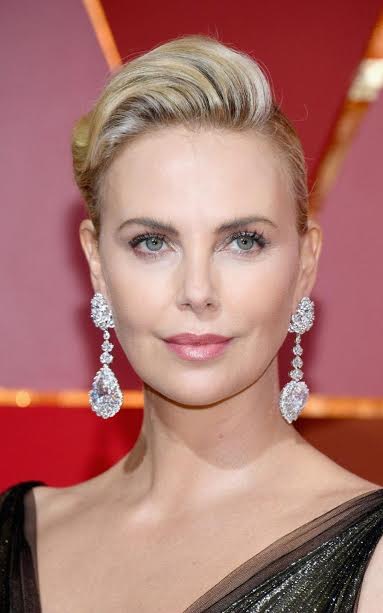 Oscar-winning actress Charlize Theron, right, also provided a sort of counterpoint to the blood diamond narrative at the 2017 Academy Awards in February. The actress created a buzz with a pair of stunning diamond earrings cut from the Queen of Kalahari, a clear 342-carat diamond recovered at Karowe in 2015. The diamond sold for US$20.55 million and was cut by jeweller Chopard into a diamond collection dubbed the Gardens of Kalahari. Theron, who is South African, wore a 26-carat heart-shaped stone and a 25-carat pear-shaped diamond.
Oscar-winning actress Charlize Theron, right, also provided a sort of counterpoint to the blood diamond narrative at the 2017 Academy Awards in February. The actress created a buzz with a pair of stunning diamond earrings cut from the Queen of Kalahari, a clear 342-carat diamond recovered at Karowe in 2015. The diamond sold for US$20.55 million and was cut by jeweller Chopard into a diamond collection dubbed the Gardens of Kalahari. Theron, who is South African, wore a 26-carat heart-shaped stone and a 25-carat pear-shaped diamond.
For me, a very brief foray into South Africa during a transfer — and in-flight conversations with a few South Africans — highlighted the geopolitical contrasts between the neighbouring countries. At the Johannesburg airport, the TV headlines were “No-confidence vote against Zuma considered.” In conversation, a few of the prevailing themes were presidential corruption on a massive scale, ANC infighting, racial tensions and the country’s downward slide.
In Botswana, by contrast, the current (elected) president — Ian Khama — is the son of a black father and a white mother. His father is Botswana’s founding president, Seretse Khama, a tribal leader who studied in England and fell in love with and married a white English woman. The union rocked South Africa — where apartheid was just getting started — as well as the rest of southern Africa. Fifty-some years later, the young country ranks high on living standards and low on corruption compared to African peers. Especially given what’s happening to the south, Botswana is a veritable oasis of stability.
There was, however, a bit of excitement during the Botswana visit. I was sitting across from Lucara CEO Lamb during dinner at a Brazilian restaurant in Gaborone when the table began to shake. “This is an earthquake,” he declared. The epicenter of the 6.5-magnitude quake was not very far away and the shaking lasted longer than any quake I’ve experienced in the seismically active Vancouver area. The quake did not cause any damage or deaths — only jokes that it was triggered by the falling rand.
‘RAINING MONEY’
In the diamond world, Lucara is the upstart that has quickly climbed to the top thanks to its high-quality, exceptionally large stones. Just four years into the mine life, Karowe is a dividend-paying profit machine. The company actually lost money in Q1 because revenues came in below projections, but that had more to do with timing of tenders than company performance. Globally, there is a looming supply shortfall for smaller diamonds. Few new mines are coming online; two Canadian mines, Stornoway’s Renard and De Beers/ Mountain Province’s Gahcho Kue, are among the exceptions. Demand for Lucara’s large stones remains strong.
And as countries go, Botswana is a young one at just 50. The Kalahari Desert covers most of the nation, and it was greener than usual this year because of above-average rainfall. Botswana’s Tswana language reflects the country’s desert reality — the currency is called the “pula.” The word has many meanings: it’s also the Tswana term for rain, as well as the declaration when you raise a toast.
It’s an apt metaphor for Lucara, because the consistent haul of large, high-quality diamonds from Karowe ensures the company will likely continue to “rain money.” The likelihood of underground expansion would extend the mine life beyond 2026 as Lucara focuses on the south lobe — the kimberlite pipe that produces the most valuable stones. The strong dividend, including further potential hikes, and share price growth makes Lucara a compelling investment under $3.00.
Lucara Diamond Corp. (LUC-T)
Price: $2.95
Shares outstanding: 382.5 million
Market capitalization: $1.13 billion
Disclosure: The author owns shares of Lucara Diamond Corp. and Tsodilo Resources but has no business relationship with either company. Lucara paid for flights to the Karowe mine site and associated costs, but not safari costs. Readers should always conduct their own research, do thorough due diligence and/or obtain professional advice. This article is solely for information purposes. Nothing contained herein constitutes a representation by the publisher, nor a solicitation for the purchase or sale of securities. The information contained herein is based on sources which the publisher believes to be reliable, but is not guaranteed to be accurate, and does not purport to be a complete statement or summary of the available data. Any opinions expressed are subject to change without notice. The author and their associates are not responsible for errors or omissions.


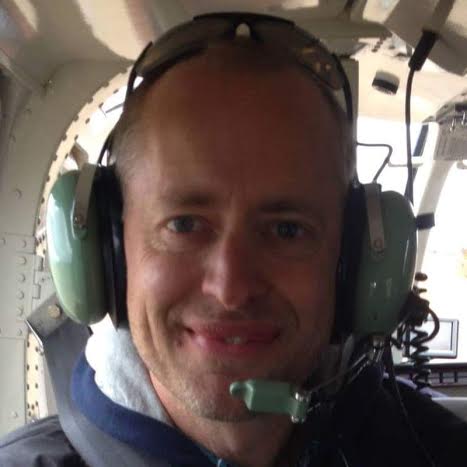 James Kwantes is the editor of Resource Opportunities, a subscriber supported junior mining investment publication. Mr. Kwantes has two decades of journalism experience and was the mining reporter at the Vancouver Sun. Twitter:
James Kwantes is the editor of Resource Opportunities, a subscriber supported junior mining investment publication. Mr. Kwantes has two decades of journalism experience and was the mining reporter at the Vancouver Sun. Twitter:  Resource Opportunities (R.O.) is an investment newsletter founded by geologist Lawrence Roulston in 1998. The publication focuses on identifying early stage mining and energy companies with the potential for outsized returns, and the R.O. team has identified over 30 companies that went on to increase in value by at least 500%. Professional investors, corporate managers, brokers and retail investors subscribe to R.O. and receive a minimum of 20 issues per year. Twitter:
Resource Opportunities (R.O.) is an investment newsletter founded by geologist Lawrence Roulston in 1998. The publication focuses on identifying early stage mining and energy companies with the potential for outsized returns, and the R.O. team has identified over 30 companies that went on to increase in value by at least 500%. Professional investors, corporate managers, brokers and retail investors subscribe to R.O. and receive a minimum of 20 issues per year. Twitter: 
